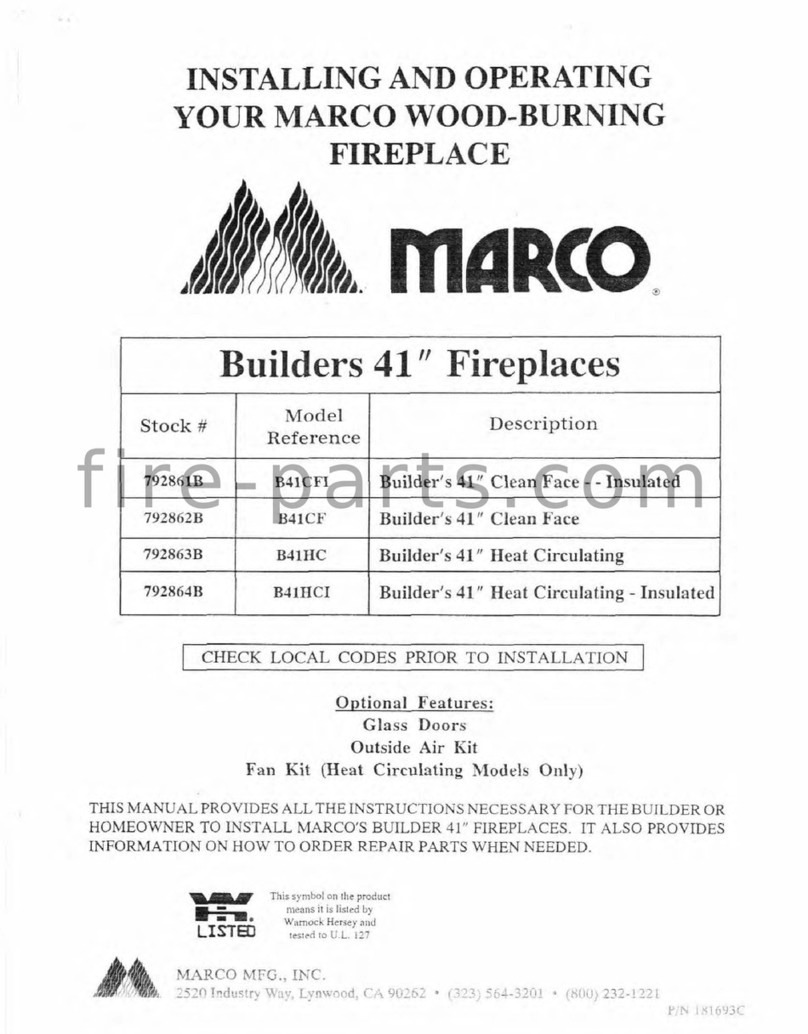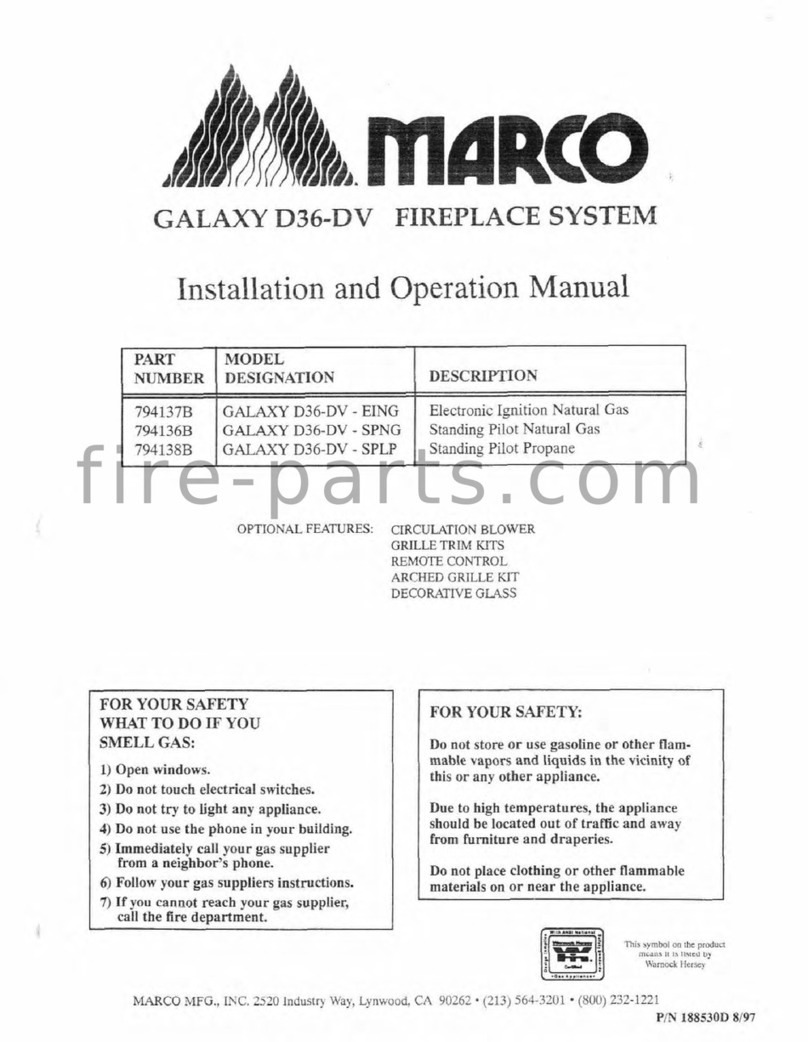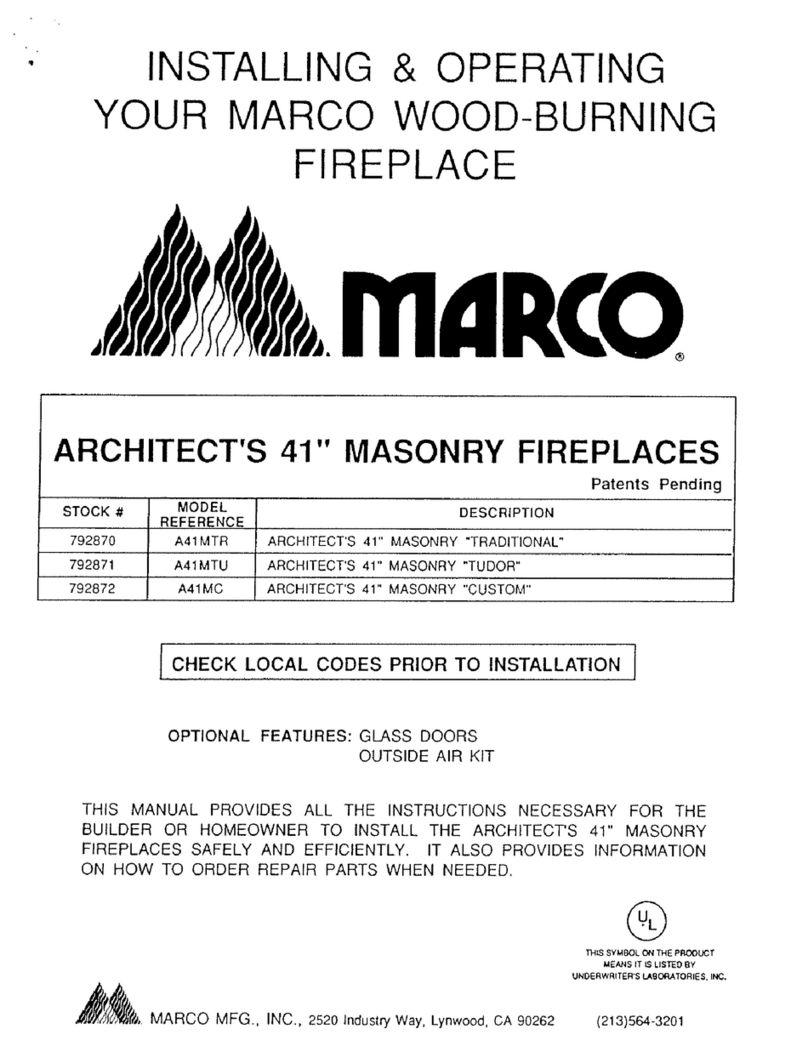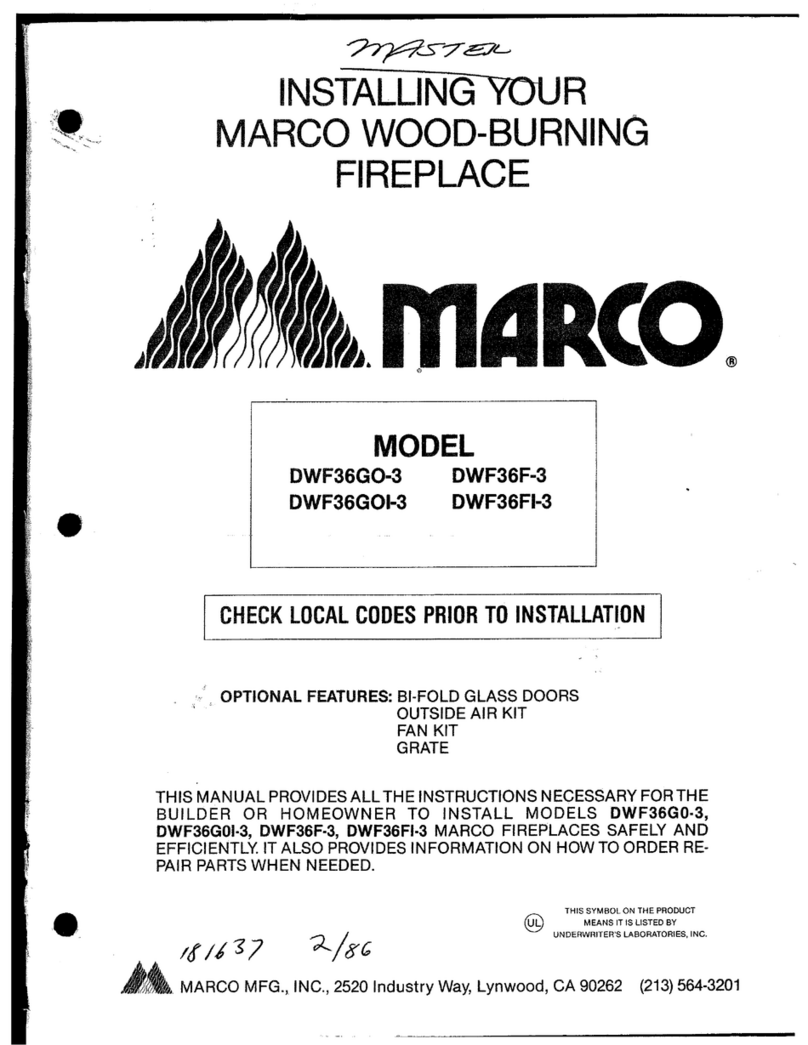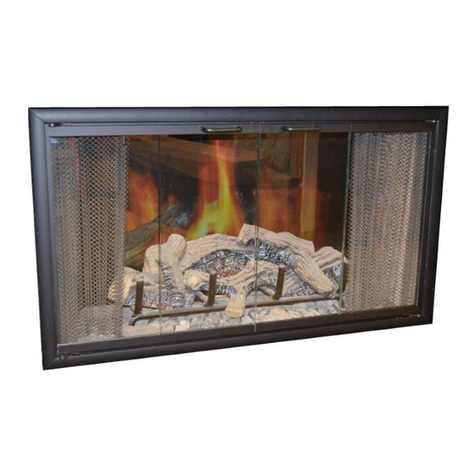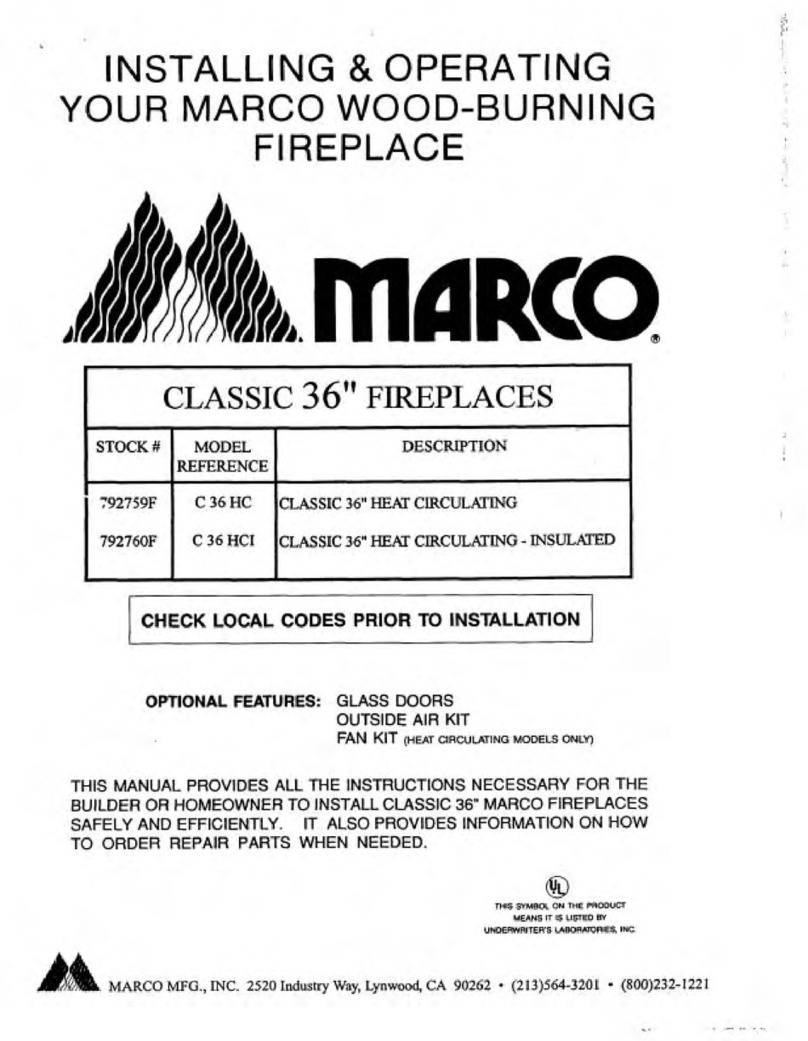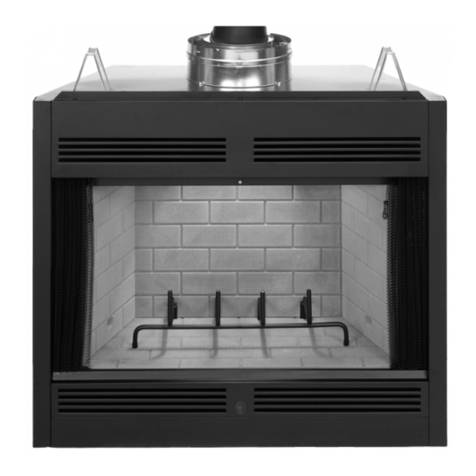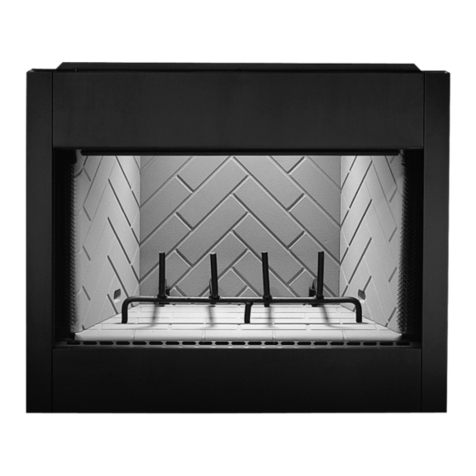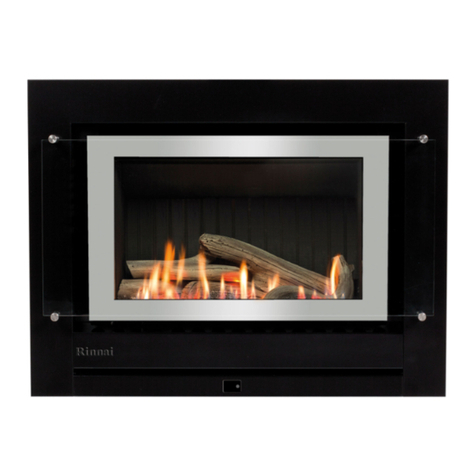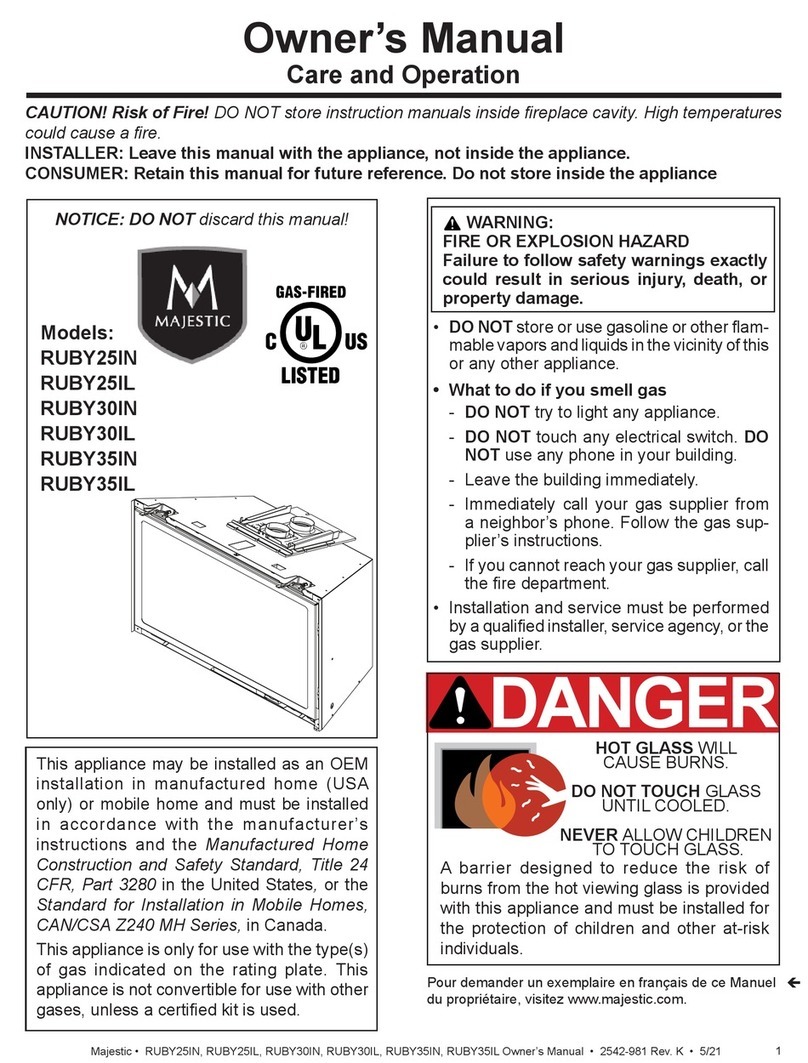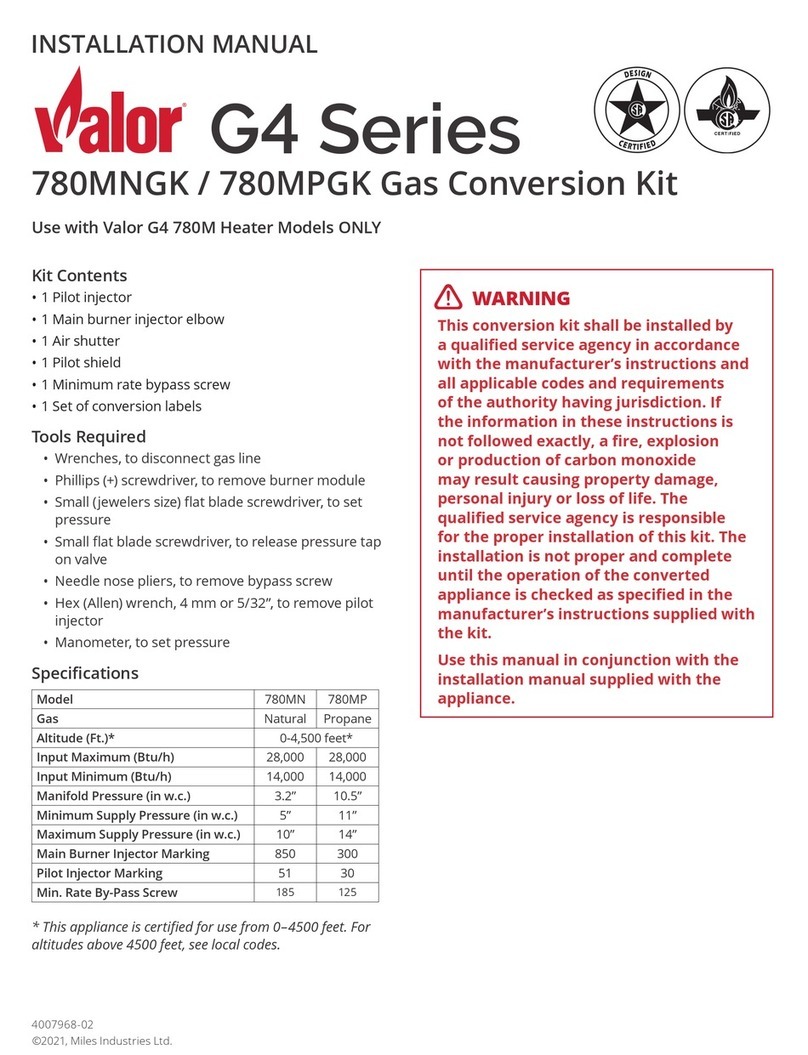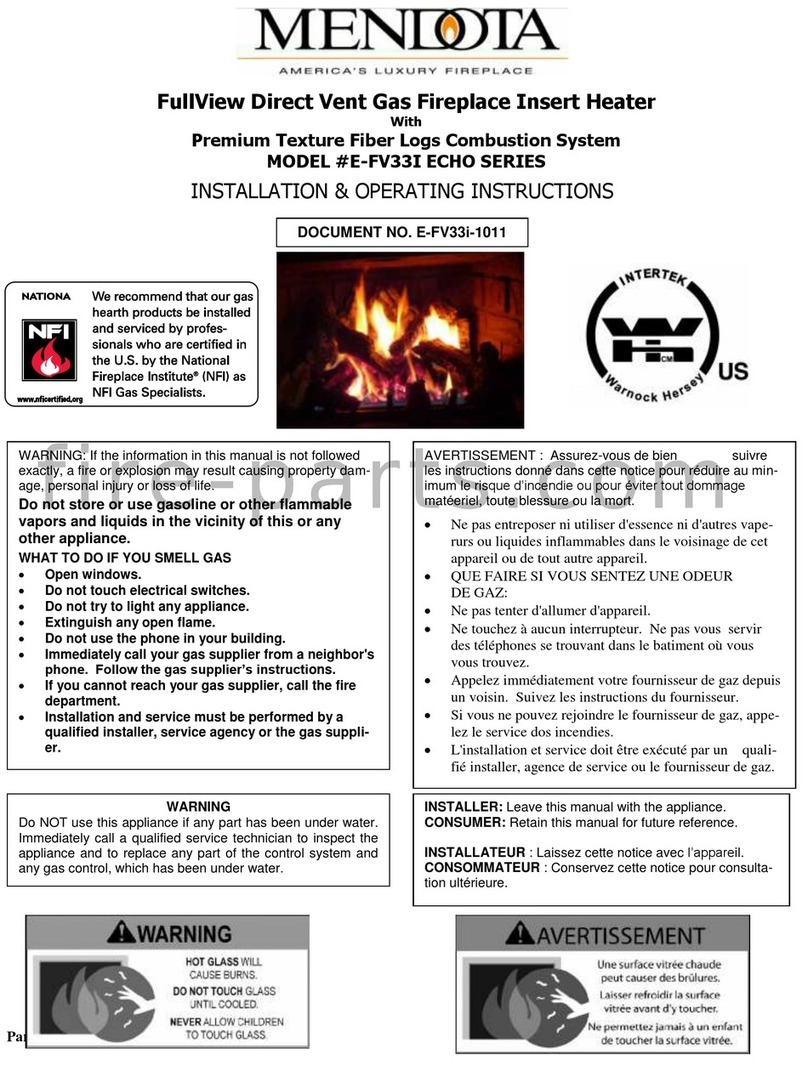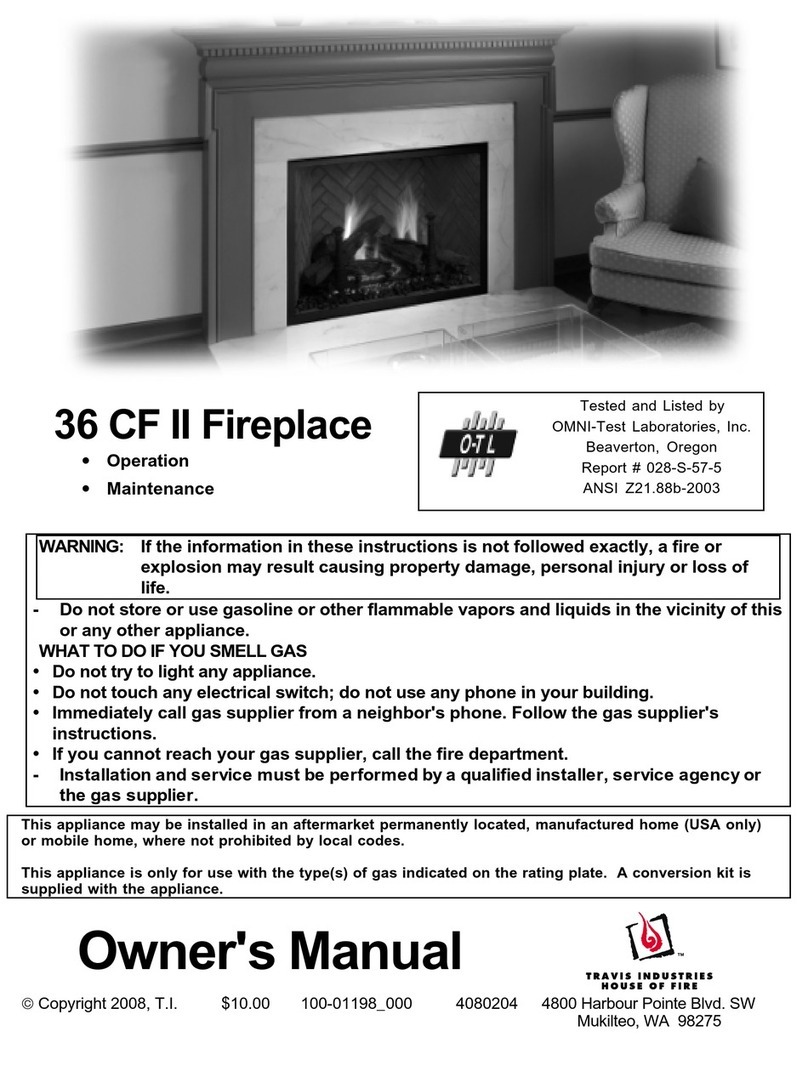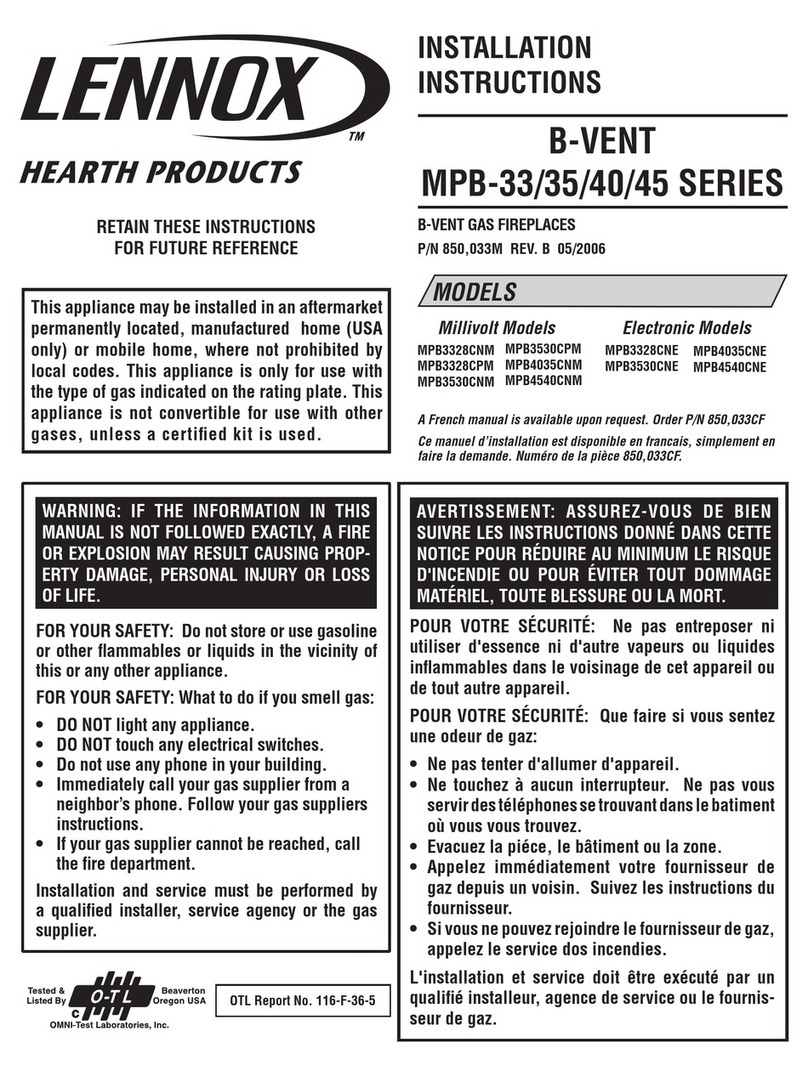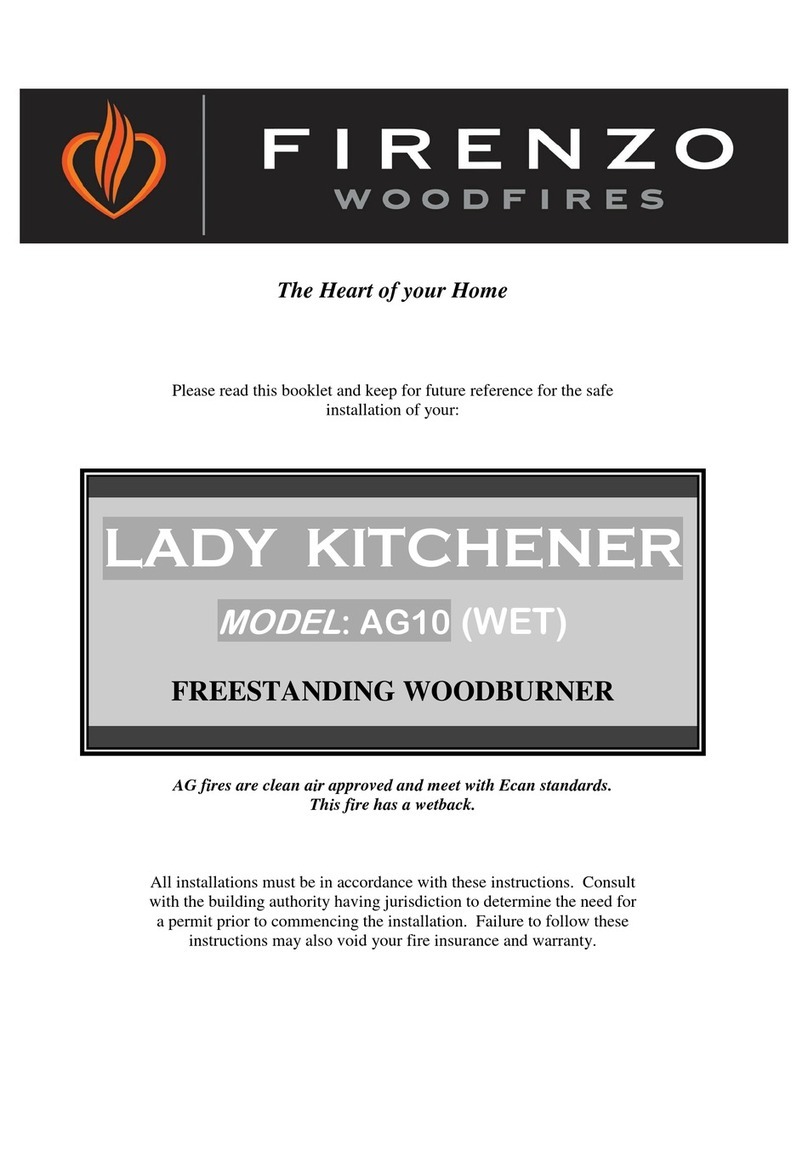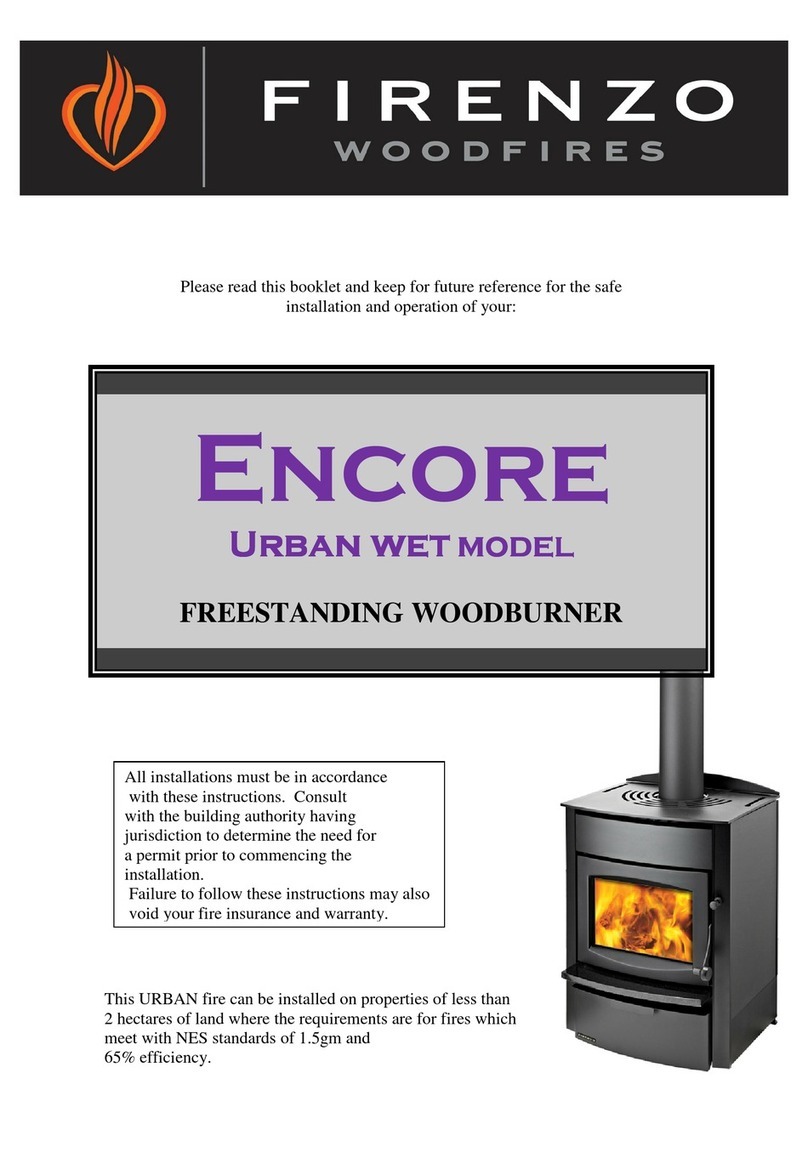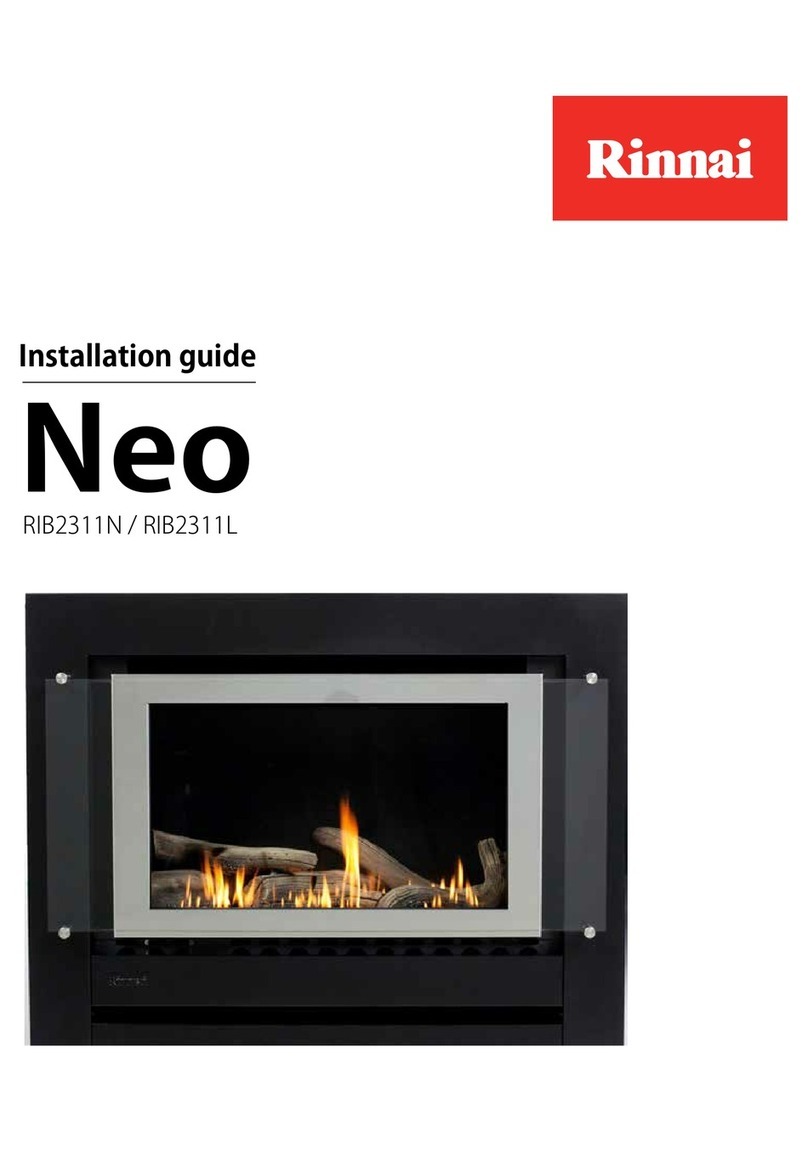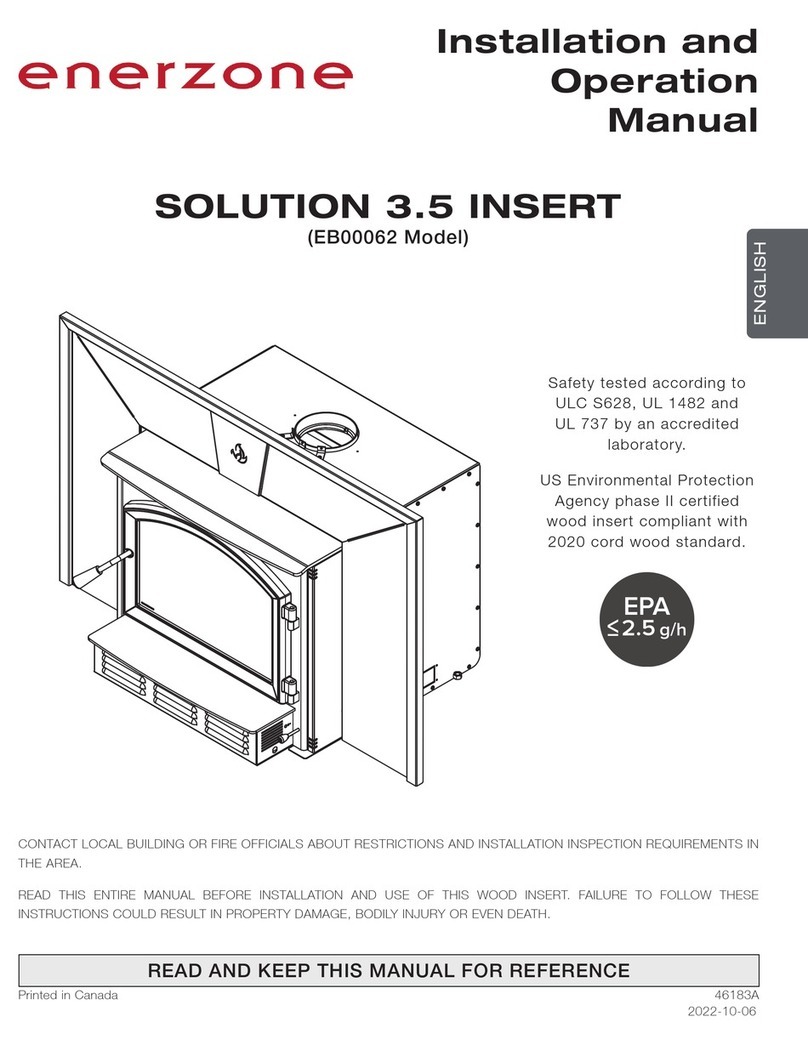
*
Read
operation and warranty ma.;:&! :horon~hly
before iztaliing and usin3
this
firep!acc.
"
Tiis
Ercplace
is
intended
hr
use ii.iih soli2 wond S~sl
mrly.
*
If
installing iueplace in cold climates, follou, the cold
climate instructions listed on page
8.
Check the
hsartt
pe.fiodically for c:aclr azd da-iagc.
Hairline crack are a nomal rssuit of repeatedly hc-ting
and coolig the iire.brick refmctory
?ad
wili
not damage
the fireplace. However,
if
a crack should k.c~melarger
thzn
1/!W
:ap;r:gx.
th
~vidi'n
~f
a
dime),
!\tz
:c;!acr
+,c
refractory.
*
Save
repairs done by
a
qualified service techician.
*
Open the dam?er to sasure propcr ope~ation.
*
Open the outside air gate before starting your fue.
Ventilating fans, central heating systems and exhaust
fans can cause fireplaces to smoke by stealing the
available combustion
air
needed for burning the wood in
your iireplace.
*
"Cii:e" C!e refractory lining by building only saall fxm
the Est Lhrre
!ims
you
use
the Fieplace. Tiie refractory
firebrick
is
made from
a
combination of materials,
including cement and water.
A
large roaring fxe, built
on "uncured" refractory, may cause crack by generating
steam within the rpiractoy.
*
Keep the area in front
of
the fireplace clear
of
combustible mnterials such as drapes, paper products,
wood storage, furniture, etc.
*
CREOSOTE
FORMATION
k?V
NEED
FOR
RE-
MOVAL
-
Slowly burning
wood
produces
&r
and
ot?,er
organic vapon that combine with expelled moisti~reto
form creosote. This creosote residue uill condense in
the relatively cool ckhney flue
of
a slow-ljuming
fi-e
and accumulate on the flue iining. &hen ignited,
this
creosote makes
z~,
extremely hot fue. hspect the chimney
at least twice a yezr during the heating season :o
determine if creosote buildup has occuxed. If creosote
has accumulated, remove it to reduce the risk of
a
chirnn~yfxe. Usin:: only
dy,
seasoned wood u,ill help
prevent excessive creosote buildup. Consalt your
warranty rnanual foi cleaning instructions.
'?'hen
the
fire
is
actively
burning,
kre~:\e dooij opcn
for maximum heat oi;rpi;t.
*
To
help
p~napn!
z;ate
"i~mout,"
'
rec?
i?e b-se
sf
ihe
fireplace c1an of excess ash bui:dup.
*
Except when adding hel,
keep
the ?.replace scieem
closed at
all
times.
+
'Ar.L<I?XG:
30
NGT
OLESTRC'CT
THE
COLLAR
OPENIXGS
AROUND
THE
SASE
OF
THE
CHIMNEY
.4T
THE
TO?
OF
THE FIREPLACE.
NEVER
USE
BLCWN
iSSiJL:\T!ON
TO
FLIT,r,
TBE
Ci-ii.hlt<zY
S:-~Ci.OSi;fiE.
"
Do not use a fueplace insert
or
other praducts not
spcci5ed for
uso
with this fireplace.
"
Do
not ovllaad
t!e
grate;
it
could cause s~oketo
enter the roam.
*
Do not aliow ash under the burning lops to build to a
point where
it
hinders thc
air
go-*..
"
Do no: block
the
Momvent or louvre grille.
"
Do not bum !age amounts
?f
wasteppr:
3;
card-
board in your fireplace.
*
D3 not burn scrap construction lumber: it produces
excessive
sp~1-k.
*
Do not burn waod producs with synthetic binders like
artificial logs or ply.wmd, 2s these produce abnormally
high temperatures.
*
Never use gasoline, gasoline-type lantern fuel, kero-
sene, charcoal ighter fluid, or
similar
liquidr to
st&
or
ireslitn up"
a
fire. Keep
a!!
such iiqrids wnli away from
:lie Sreplacc.
*
Xever close the damper until you
are
cszain
that
there
are no
warm
embers.
*
Disposal of
.4s'n:
Place ash
in
a metal container wl:h
a
tigh:-fitting lid. Keep
tho
closed container on
a
non-
combustible
floor,
or on the ground, well away iron all
combustible
mate ria!^,
pending final disposal.
If
the
ashes are disposed
of
by bIlr;.a!
in
soil or otherwise locally
disp2rsed, they should be retained in the closed con-
tainer until a11 cinders have tho:oug..Iy cooled.





















